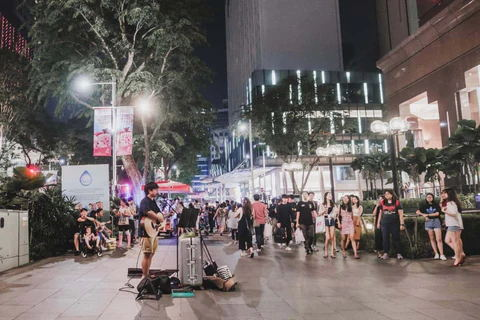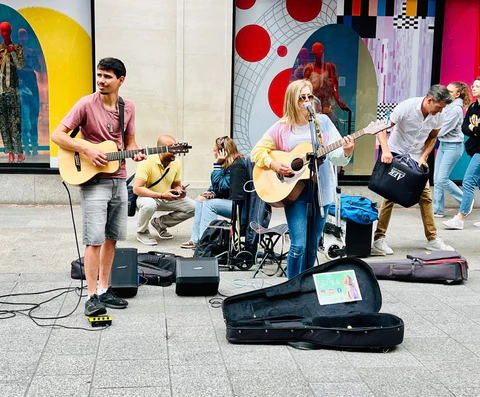In the heart of bustling city streets, a unique and captivating form of artistic expression comes to life – busking. These intrepid individuals, known as buskers, transform sidewalks and plazas into stages where their talents shine, inviting passersby to pause, appreciate, and participate. As we dive into the enigmatic world of busking, we’ll explore the origins, significance, and the captivating essence of this timeless art form.

Setting the Stage for Busking
What is a busker? A busker is a performer who showcases their skills, be it musical, magical, theatrical, or even comedic, in public spaces. Unlike traditional performers, buskers don’t rely on ticket sales; instead, they rely on the generosity of those who are moved by their impromptu performances. The very essence of busking lies in its raw, unscripted nature, as each act is a unique blend of talent, connection, and spontaneity.
Origins and Evolution
The roots of busking run deep in history, tracing back to ancient civilizations where street performances were a common form of entertainment. From troubadours in medieval Europe to the wandering minstrels of old, busking has evolved over time, adapting to changing cultural landscapes. Today, modern buskers continue to draw inspiration from these historical traditions while infusing their own contemporary flair.
A Symphony of Talent
Busking is a diverse and eclectic art form that knows no bounds. Musicians strumming guitars, violinists serenading the crowds, and drummers setting rhythmic beats provide a symphony of sound that enriches the urban soundscape. But it’s not just about the auditory experience – busking is a visual feast too. From mesmerizing magic tricks to spellbinding dance routines, each performance is a testament to the vast tapestry of human creativity.
The Connection Between Buskers and Audiences
What sets busking apart is the unique connection that forms between the performers and their audience. Unlike traditional performances, buskers engage directly with those who stop to watch, breaking down the barriers that often exist between the stage and the seats. This interaction creates an intimate and unfiltered experience, fostering a sense of unity and shared enjoyment.
The Challenges and Triumphs
While the life of a busker may seem romantic, it is not without its challenges. From unpredictable weather conditions to the ebb and flow of foot traffic, buskers navigate a dynamic environment that requires adaptability and resilience. Moreover, they often face legal and regulatory challenges, with different cities imposing varying rules on where and when performances are allowed. Despite these hurdles, buskers persevere, driven by their passion for their art and their desire to bring joy to the streets.

Conclusion
In the heart of city streets, amid the urban hustle and bustle, buskers stand as modern-day troubadours, enchanting and engaging with their impromptu performances. what is a busker? A busker is not just a performer; they are the architects of spontaneous joy, the purveyors of unscripted connection, and the weavers of a unique urban tapestry. As we stroll through the vibrant city landscapes and encounter the diverse talents of these street artists, we’re reminded that busking is more than just an art form – it’s a celebration of the human spirit, a testament to creativity’s boundless forms, and a bridge that unites us all in shared moments of wonder and delight.


